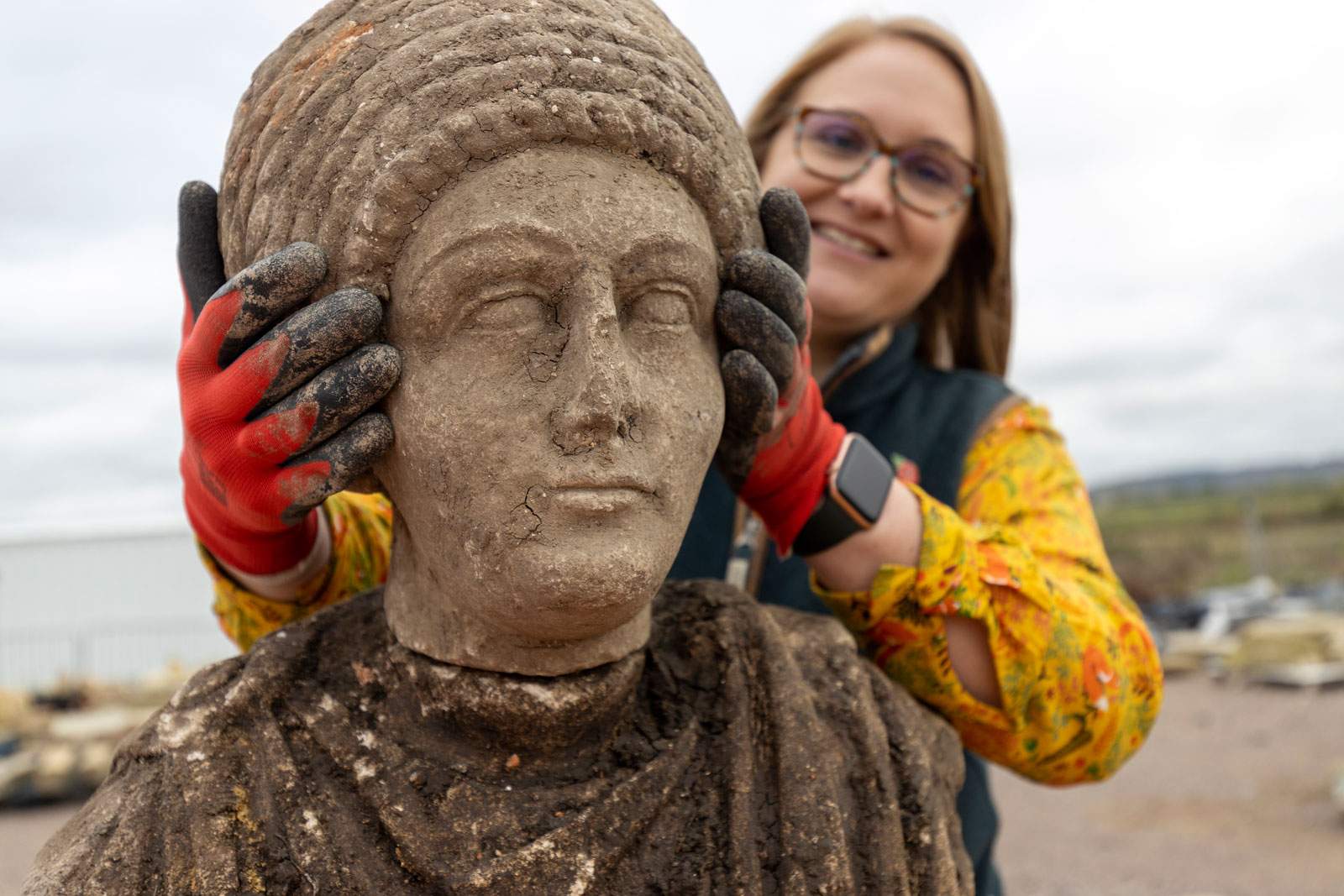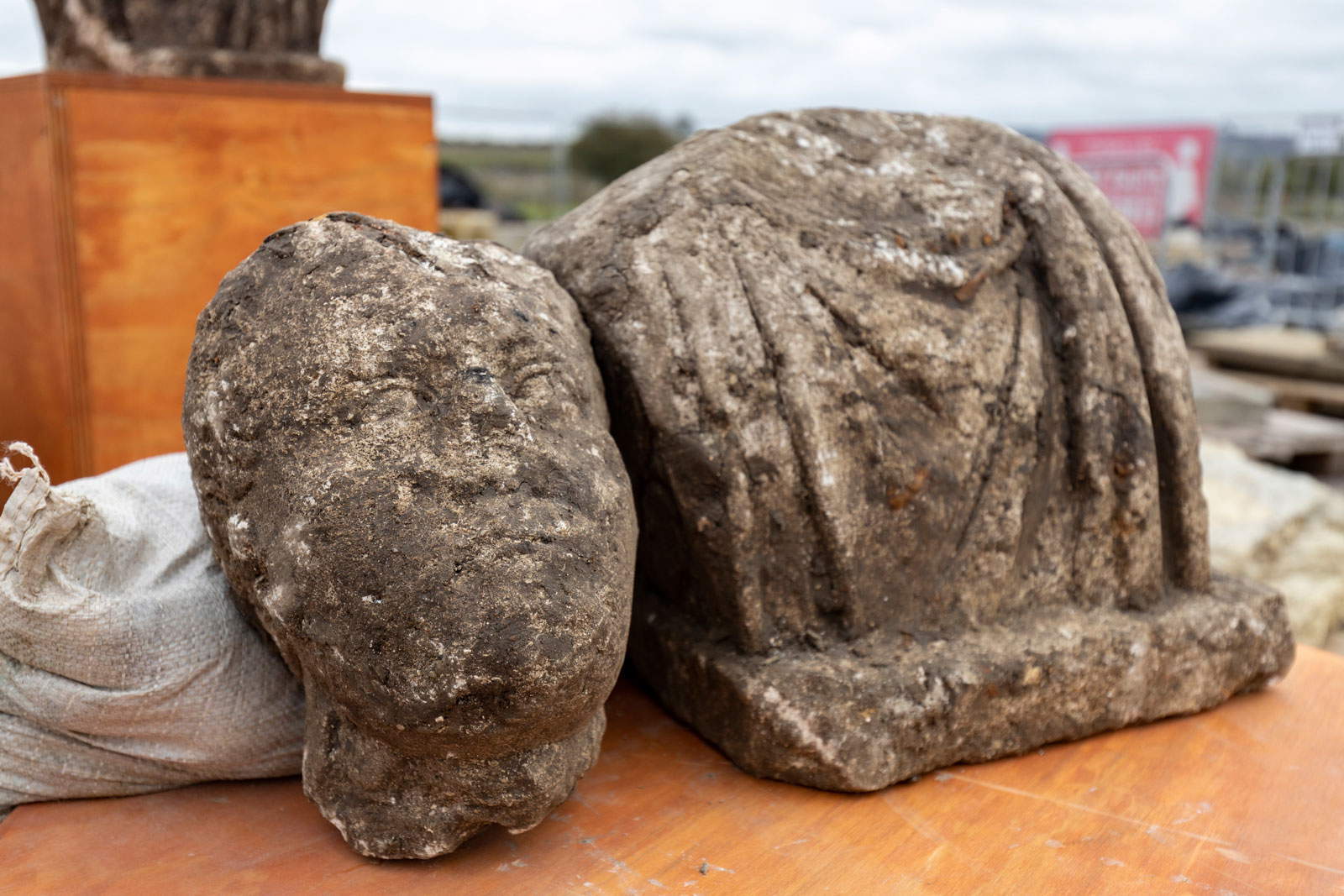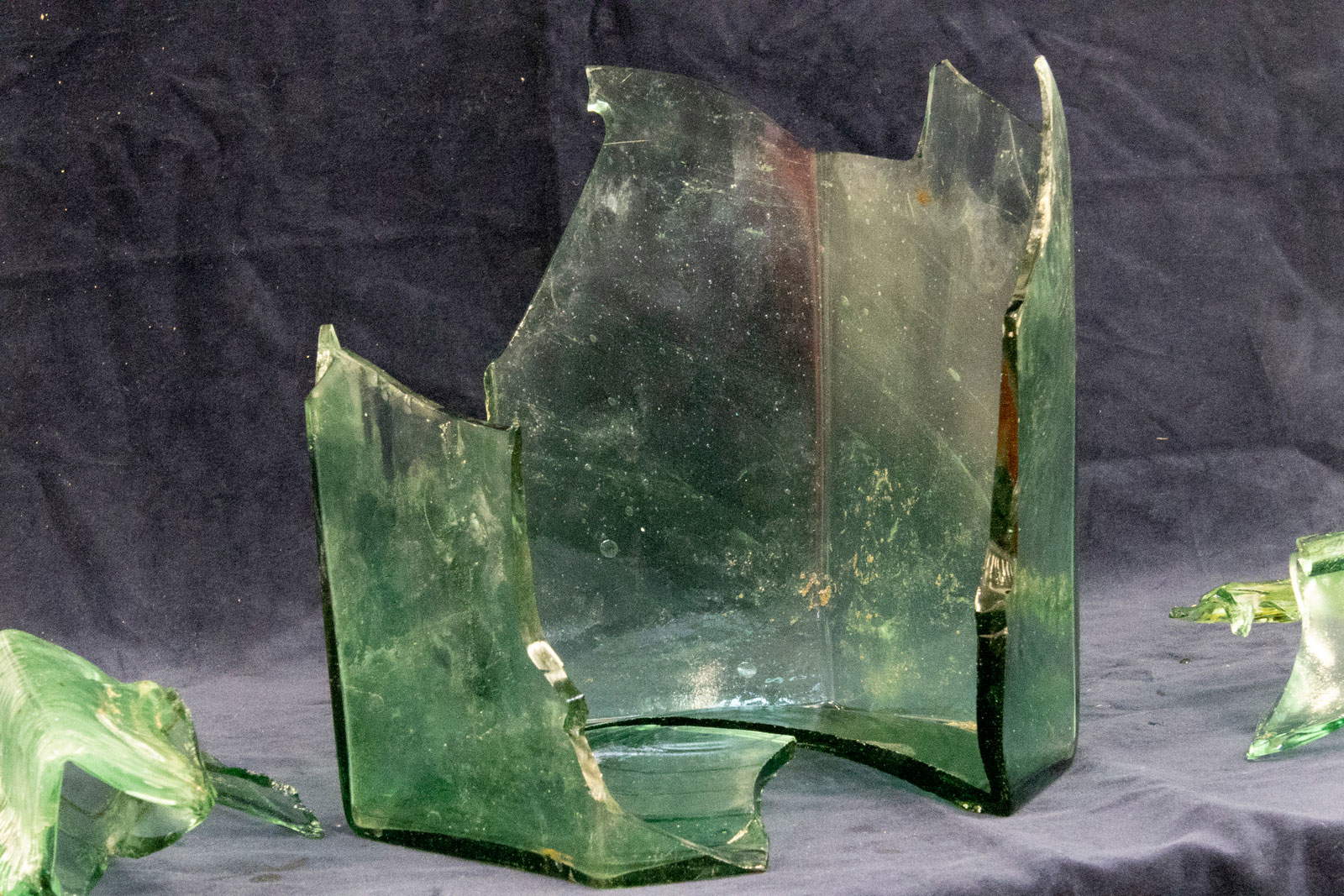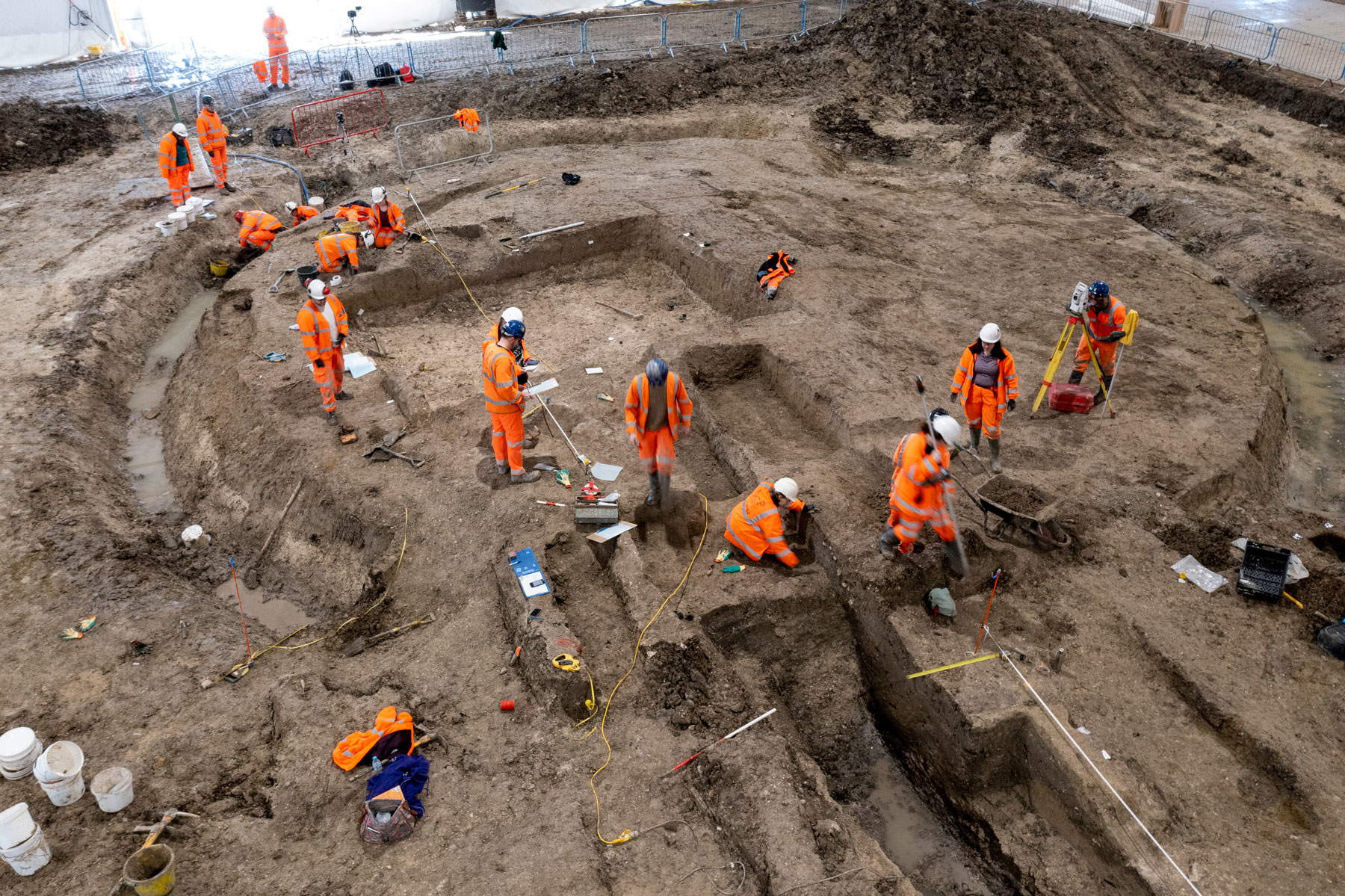In England, archaeologists working on excavations for the construction of the HS2 high-speed railway (High Speedway 2: it is the second high-speed line in England, after the one linking London to the Channel Tunnel, and will connect, in two branches, London to Leeds and to Manchester), have uncovered statues and objects from Roman times: of particular value are three stone busts, discovered at what is believed to be the site of an ancient Roman mausoleum. The discovery took place under the medieval church of St. Mary’s in the village of Stoke Mandeville, halfway between London and Oxford.
The three busts depict a man, a woman and a child. The discovery of these artifacts caused great excitement among the team working on the site: archaeologists working on the HS2 excavation, from the firm LP Archaeology, called the discovery “extraordinary.” In addition to the statues, an incredibly well-preserved hexagonal Roman glass jug was also discovered. Despite being in the ground for centuries, the jug was in very large fragments, and according to archaeologists, all of them have been identified. According to LP Archaeology experts, the only work comparable to this is a glass vessel, intact, preserved at the Metropolitan Museum of Art in New York. Other finds include large tiles, painted wall plasters and Roman cinerary urns.
According to the team working at Stoke Mandeville, the site appears to be a natural mound, which was then deliberately covered with earth to create a higher mound. It is possible that this may have formed a Bronze Age burial site. It appears that this site was later replaced by a square building that may have originated in Roman times. Archaeologists consider the square building that precedes the Norman church to be a Roman mausoleum: the Roman-era materials found in the moat around it are in fact of too fine workmanship and in too large a number to assume that the building was a dwelling. In any case, it seems that the Roman building was finally demolished by the Normans during the construction of St. Mary’s Church, after probable reuse in Saxon times. The walls and rubble resulting from the demolition of the Roman building lie directly beneath the Norman foundations, with no soil in between.
“For us to conclude the excavation with these absolutely amazing discoveries,” said archaeologist Rachel Wood, “is really exciting. The statues are exceptionally well preserved, and you really get a sense of the people they depict-literally looking at faces from the past is a unique experience. Of course, all this leads us to wonder what else might be buried beneath the medieval churches in English villages. We look forward to what else specialists can tell us about these incredible statues and the history of the site before the Norman church was built.”
“HS2’s unprecedented archaeological program,” says Mike Court, HS2’s chief archaeologist, “has given us new information about Britain’s history, providing evidence of where and how our ancestors lived. These extraordinary Roman statues are just some of the incredible artifacts discovered between London and the West Midlands. As HS2 builds for Britain’s future, we are discovering and learning about the past, leaving a legacy of knowledge and discovery.”
The discovered objects will now be taken to a specialized laboratory where they will be cleaned and examined. Roman statues were typically painted in bright colors, so evidence of pigmentation in the folds of the statue will be examined. The final destination of the Roman artifacts will be determined later.




 |
| England, Roman statues found in High Speed Rail excavation: extraordinary discovery |
Warning: the translation into English of the original Italian article was created using automatic tools. We undertake to review all articles, but we do not guarantee the total absence of inaccuracies in the translation due to the program. You can find the original by clicking on the ITA button. If you find any mistake,please contact us.